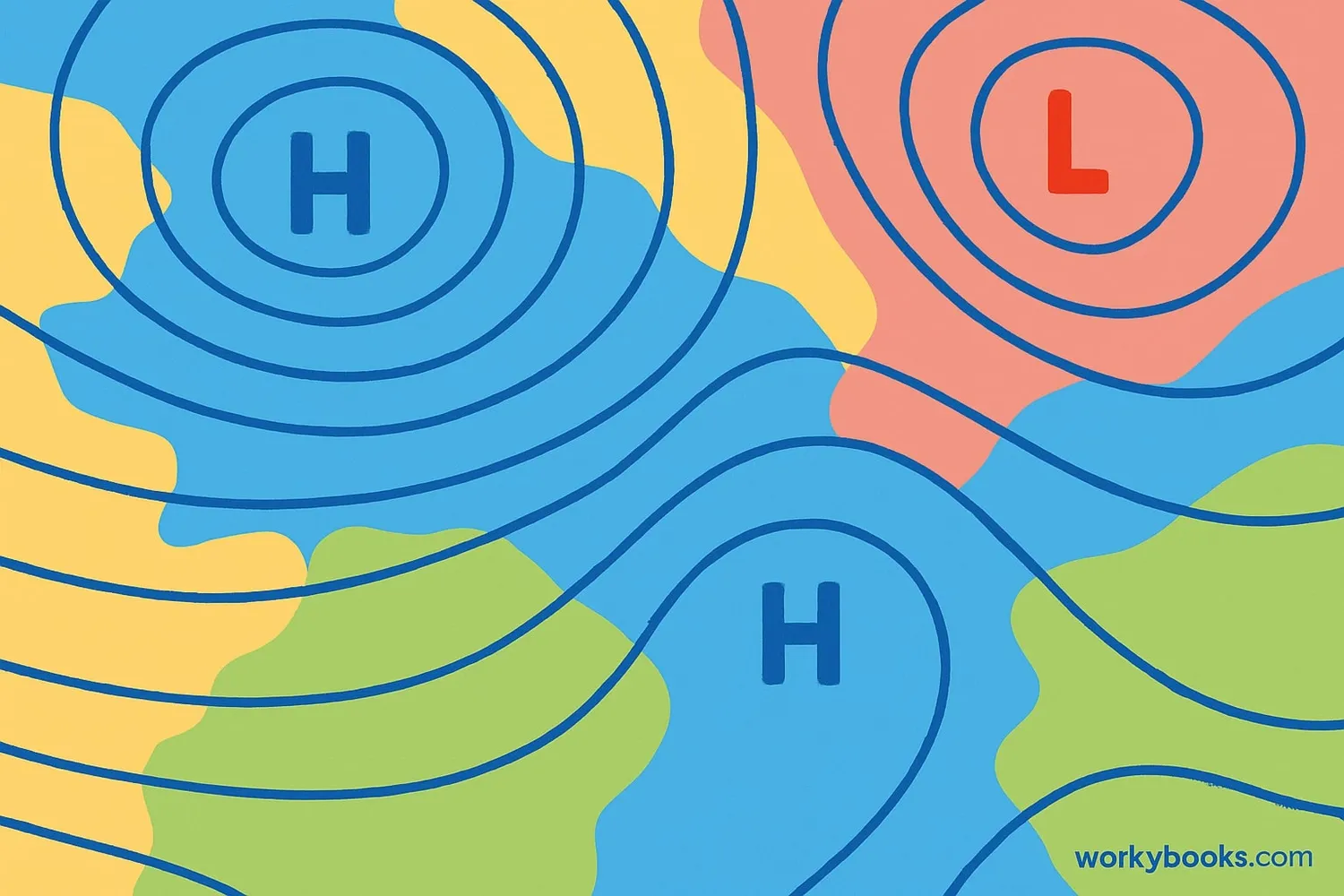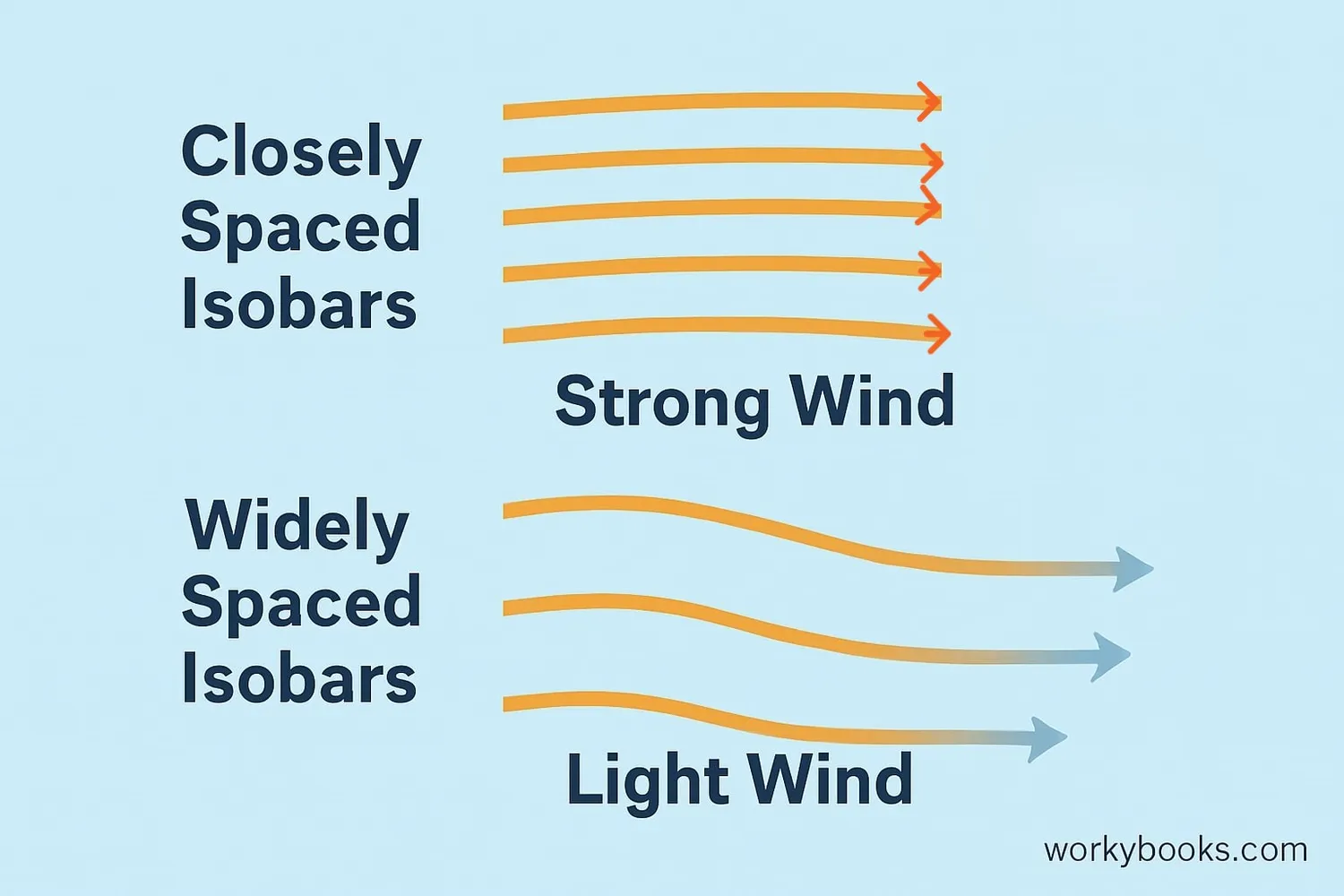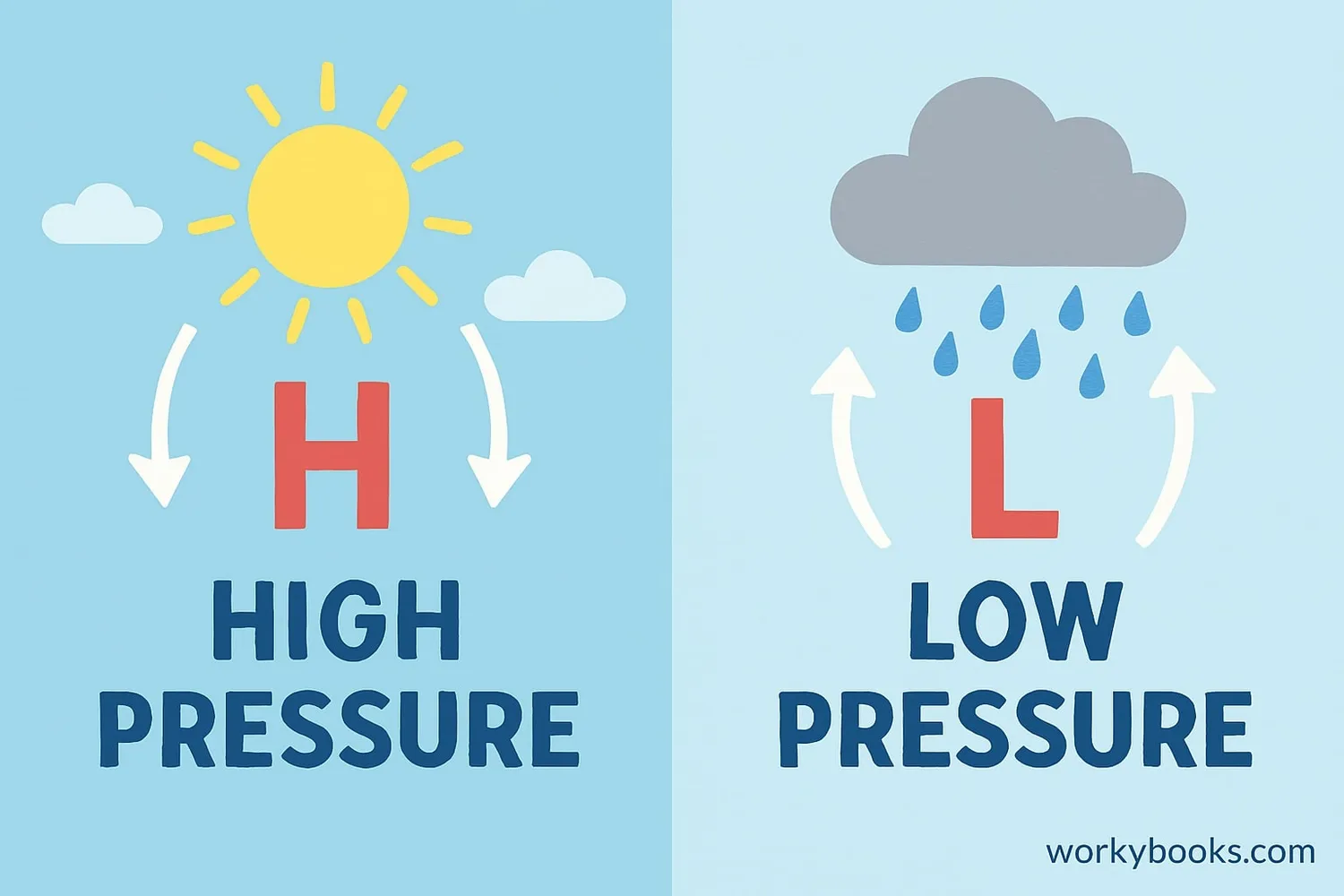Isobars - Definition, Examples, Quiz, FAQ, Trivia
Learn how weather maps use lines to show air pressure and predict weather!
What is an Isobar?

An isobar is a special line on weather maps that connects places with the same air pressure. The word comes from Greek: "iso" means equal, and "bar" means weight or pressure. So isobar literally means "equal pressure"!
Think of isobars like the contour lines on a hiking map, but instead of showing elevation, they show air pressure. Just like contour lines help us see mountains and valleys, isobars help meteorologists see areas of high and low pressure that create different weather patterns.
Did You Know?
Isobars are usually drawn at intervals of 4 millibars (a unit of pressure). For example, you might see isobars labeled 1000, 1004, 1008, etc.
Reading Isobars on Weather Maps

Learning to read isobars helps you understand weather maps like a meteorologist! Here's what you need to know:
Line Spacing
Closely spaced isobars mean strong winds. Widely spaced isobars mean light winds.
Wind Direction
Winds blow parallel to isobars, slightly inward toward low pressure areas.
Pressure Centers
Circles of isobars show high (H) and low (L) pressure centers.
Pressure Values
Numbers on isobars show the air pressure in millibars (mb) or hectopascals (hPa).
(close isobars)
(spaced isobars)
Weather Tip!
When isobars form circles, the smallest circles are the pressure centers. Low pressure usually brings clouds and precipitation, while high pressure usually means fair weather.
High & Low Pressure Systems

Isobars help us identify important weather systems: high pressure and low pressure areas. These systems create the weather we experience every day!
High Pressure System
Weather: Sunny and clear
Wind: Light, clockwise (in Northern Hemisphere)
Air Movement: Sinking air prevents cloud formation
Isobars: Circles with higher pressure in center
Low Pressure System
Weather: Cloudy with possible rain/snow
Wind: Strong, counter-clockwise (in Northern Hemisphere)
Air Movement: Rising air forms clouds and precipitation
Isobars: Circles with lower pressure in center
The spacing between isobars tells us how quickly the pressure changes over distance. When isobars are close together, the pressure changes rapidly, creating stronger winds. When they're far apart, the pressure changes slowly, resulting in calmer conditions.
Isobars Knowledge Quiz
Test your understanding of isobars with this weather quiz! Answer all 5 questions to see how much you've learned.
Frequently Asked Questions
Here are answers to common questions about isobars:
Weather Trivia
Discover some fascinating facts about isobars and weather:
Historical Origins
The first weather map with isobars was created in 1863 by English scientist Francis Galton. He was also a cousin of Charles Darwin!
Extreme Pressure
The highest sea-level pressure ever recorded was 1084 mb in Siberia, while the lowest was 870 mb in a Pacific typhoon. That's a difference of 214 mb!
Nature's Barometers
Some animals sense air pressure changes! Birds fly lower before storms, and cows often lie down when pressure drops, possibly to conserve heat.
Southern Hemisphere Difference
In the Southern Hemisphere, winds flow counter-clockwise around high pressure and clockwise around low pressure - the opposite of the Northern Hemisphere!





